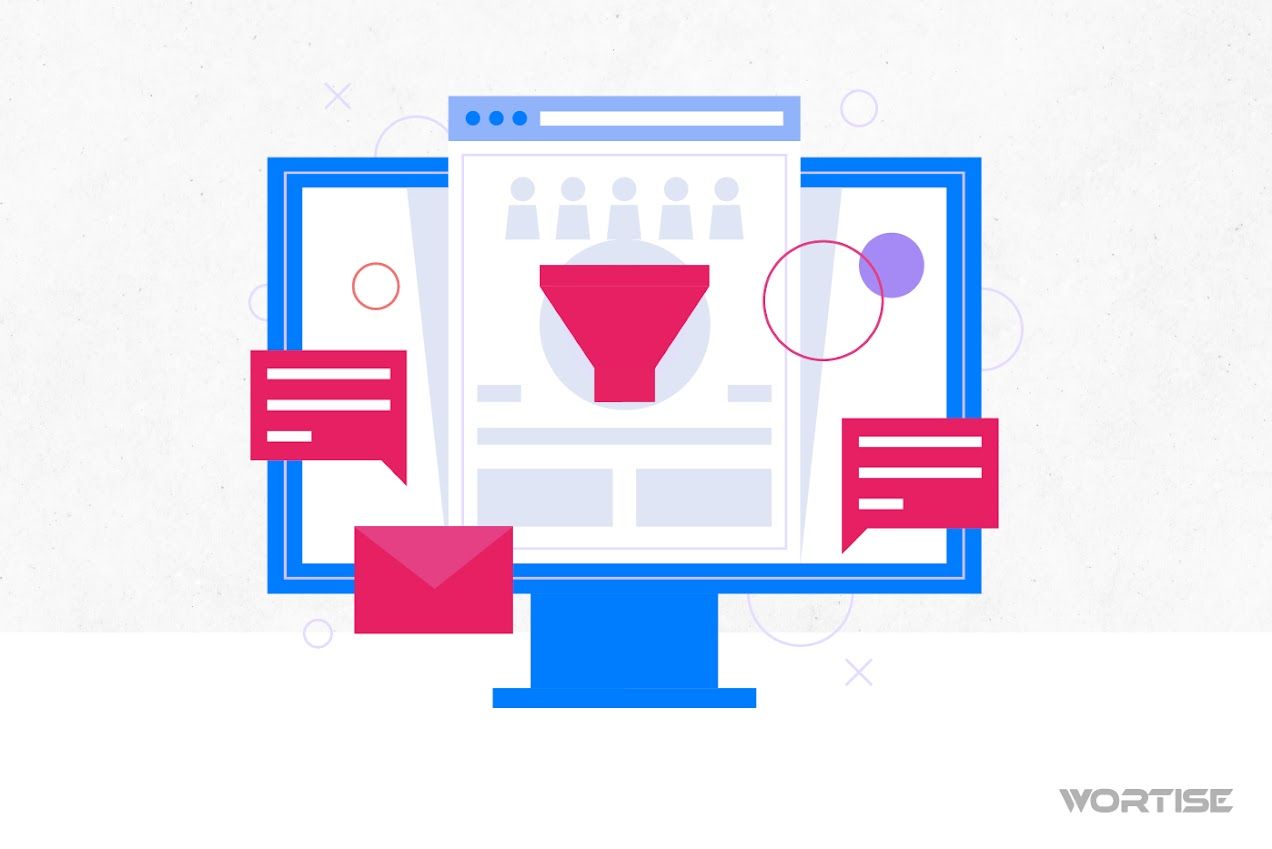Have you ever wondered where your ads end up after a digital advertising campaign? You are not alone; many advertisers who use intermediaries struggle to track precisely where their ads will appear, whether they are reaching the desired audience, and more. This problem finds a solution with Self Serve Advertising Platforms.
Self-Serve Advertising Platforms (SSP) emerged as a tool for advertisers of any scale or with different characteristics to guide, control, and carry out their strategies as they wish. Want to know how this can help you too? Stay until the end of this article.
What are Self Serve Advertising Platforms?
Before moving forward, it is necessary to understand that Self-Serve Advertising Platforms (SSP), also known as self-service advertising platforms in Spanish, are digital tools that allow advertisers to create, manage, and optimize their advertising campaigns independently, without the need for intermediaries.
There are many SSPs in the digital environment; however, in general terms, advertisers find an intuitive and easy-to-use interface on these platforms, making them accessible to both expert and beginner advertisers.
How do Self Serve Advertising Platforms work?
For their operation, a self-service advertising platform connects with other AdTech systems. This allows users to create and manage campaigns directly on a publisher’s digital platforms, whether websites or video streaming services, often using an ad server.
After a user configures a campaign on the Self Serve Advertising Platforms, the information is shared with AdTech and data platforms through an Application Programming Interface (API). Any adjustments made within the SSP are automatically updated on the connected data platforms and AdTech.
This entire process offers advertisers the guarantee of perfect coordination and coherent campaign management. If we could follow a basic process on how an SSP works, it would look like this:
- The advertiser creates their account on the SSP platform.
- The advertiser then defines their campaign objectives, including the target audience, budget, and formats in which the ad will be displayed (audio, video, image, etc.).
- With this data, the SSP sends bid requests to an ad exchange network.
- Publishers with available ad space respond to the bid requests with their offers.
- The SSP automatically takes the highest bid that meets the advertiser’s criteria and displays the ad in the ad spaces.
- The advertiser pays the publisher for the ad placement.
Although this process may seem extensive, it can all happen in less than a minute.
Characteristics of Self Serve Advertising Platforms
When it comes to self-service advertising platforms, each can vary, but they all share essential characteristics as seen below:
User Interface (UI)
A user-friendly interface is crucial, given the handling of data and budgets in this environment, to help supervise campaigns, manage users, and integrations. Therefore, it must be very practical for both the company managing the platform (such as a DSP or an advertising agency) and its clients.
Campaign Management
In this space, users on the SSP have the opportunity to create, launch, and even modify advertising campaigns. Users can also specify details such as the type of ad (text, native, video), duration, target locations, where the ads appear, and other criteria.
Reporting Dashboard
Users also find this function on a Self Serve Advertising Platform to track how the campaign process is going. In this regard, it provides valuable metrics such as impressions, clicks, conversions, among others. It also offers more specific data such as the geographic location where the advertising action is taking place, the type of device, and the ad format.
User Management
If it is required that one or more users, such as in a marketing team, have access to the SSP, this tool allows administrators to add or remove users to control their access to different parts of the platform.
Integrations
For all this to be possible, synergy with other AdTech platforms, such as DSPs, SSPs, ad networks, and ad servers, is essential for campaign execution. Additionally, connections with data platforms like DMP and CDP help target specific audiences. For example, a publisher could use these types of integrations to allow advertisers to reach their audience effectively.
What are the benefits of using Self Serve Advertising Platforms?
SSPs offer a series of benefits that make them an attractive option for advertisers:
Total Control
SSPs provide advertisers with great control over the management of their advertising campaigns. This way, they can choose and verify where their ads are shown, the audience they are targeting, modify it according to their requirements, and manage how much they are willing to pay per click or impression.
Transparency
Self Serve Advertising Platforms can generate detailed reports on campaign performance. This allows advertisers to make adjustments and optimize their strategies in real-time.
Efficiency
These platforms can eliminate the need to work with intermediaries, empowering teams to take control of their programmatic advertising strategies, saving time and money.
Flexibility
SSPs provide access to a wide range of ad formats and targeting options. This way, they give users the flexibility to create customized campaigns that meet their specific needs.
How to choose the right Self Serve Advertising Platform for you?
The dynamic world of digital advertising is very competitive, even for Self Serve Advertising Platforms (SSP), which have emerged as powerful tools, offering solutions for more than one challenge in programmatic advertising. Choosing the right one can be complicated; here are some key factors to consider:
1. Define needs and objectives
For this, the advertiser must ask key questions such as: what type of campaign they want to start (for example, display, video, among others); they should also ask which audience they want to target (it is essential to have a buyer persona, a defined target audience); estimate the budget, as well as the functionality of the SSPs they require.
2. Research different options
As mentioned earlier, the competition is wide, and the range of options is there to program increasingly precise ads. Among the main Self Serve Advertising Platforms are Google Ads, Facebook Ads, Amazon Advertising, The Trade Desk, etc.
Choosing the most suitable one sometimes involves understanding the behavior of the target audience and asking if it is a group that prefers social networks like those of Meta or if, on the contrary, it is the type that prefers to search on Google.
Read the opinions of other advertisers in forums, blogs, and reviews to know the experiences of other advertisers. Evaluate the characteristics and functionalities of each SSP.
3. Choose an SSP with a good reputation
It is important to look for a Self Serve Advertising Platform with a proven track record of success. For this, it may be possible to see if the SSP is certified by independent bodies. Advertisers can ensure that the SSP offers good customer support.
4. Start with a small campaign
It’s good to be cautious. If it is a new platform, starting with a small budget in the first campaign can serve as an exploration to better understand this tool.
It is also recommended to use a small campaign to familiarize yourself with the platform and test different configurations. It is always a good idea to analyze the campaign’s performance and make adjustments as necessary. Keep in mind that there is no single SSP that is perfect for everyone. The best Self Serve Advertising Platform for an advertiser will depend on their specific needs, goals, and budget.
Examples of Popular SSPs
There may be hundreds of Self Serve Advertising Platforms; however, some of the well-known ones are:
Google Ads
One of the most popular Self Serve Advertising Platforms, belonging to the search giant, and one of the most complete on the market. Of course, its functions are oriented towards the universe of Google’s advertising spaces, like its search engine. If your audience is on search platforms, you will probably reach them with this tool.
On the contrary, if it is an audience more inclined to social networks, as occurs in certain countries, then this platform may not be the most suitable. Still, it offers advertisers a wide range of functionalities, targeting options, and ad formats. For all these reasons, it is ideal for advertisers of all sizes and budgets.
Facebook Ads
Another well-known platform in programmatic advertising is Facebook Ads. If your target audience is in the universe of Mark Zuckerberg’s social networks (Facebook or Instagram), with this Self Serve Advertising Platform, advertisers can reach them effectively with personalized ads.
The tool offers its users precise targeting based on demographics, interests, and behaviors that allow reaching a target audience through ads on Facebook, Instagram, and other Facebook properties.
Amazon Advertising
For those who sell their products on Amazon, the e-commerce giant has Amazon Advertising, which allows developing advertising campaigns to promote the sales options that merchants have on the platform and reach millions of potential customers.
The Trade Desk
An independent Self Serve Advertising Platform that offers access to a wide network of ad exchanges and targeting options. It positions itself as a valuable option for experienced advertisers seeking greater control over their campaigns.
Magnite (Rubicon Project)
With the slogan that advertisers’ spending “goes further,” it is one of the largest independent Self Serve Advertising Platforms in the world. It offers innovative solutions for programmatic ad buying, including campaign optimization and advanced analytics.
AppNexus
A well-recognized Self Serve Advertising Platform in mobile and native advertising. This SSP offers a wide variety of solutions for advertisers, specifically those looking to reach their audience through mobile devices and applications.
MediaMath
This is a global SSP that offers excellent service for large-scale programmatic ad buying. It is ideal for large advertisers and agencies whose requirements are oriented towards managing multiple campaigns in different markets simultaneously.
Index Exchange
An SSP specialized in video advertising, offering access to a premium inventory of high-quality video ads. It is a good option for advertisers looking to use the power of video to reach their audience.
Criteo
A Self Serve Advertising Platform specializing in retargeting and interest-based advertising. It uses browsing and behavioral data to show relevant ads to users based on their interests in the advertiser’s products and services.
PubMatic
In this case, it is a Self Serve Advertising Platform that offers a flexible and scalable platform for programmatic ad buying. It is a good option for advertisers seeking a customized solution that adapts to their specific needs.
Looking to place your ads on apps and websites? With Wortise, you can achieve it
We are a platform that currently connects more than 200 advertisers like you worldwide with publishers on websites and mobile apps, it is an ad network platform with intelligent targeting and ad mediation system.
This way, it helps publishers monetize their platforms with ads while offering a high-value ad inventory for advertisers. If you want to know more about how we can help you, start your registration and receive personalized treatment during the process of your first campaign.
Register and start connecting with publishers with high-value ad inventories.




